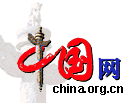|
The Chinese Government Thursday called for World Trade Organization (WTO) members, developed ones in particular, to remove textile and apparel quotas as scheduled.
It also cautioned United States' attempts to limit Chinese textile exports would result in a negative impact on bilateral trade and economic relations.
"It is WTO members' obligation to fulfill what they have committed to the WTO," said an official from the Department of Foreign Trade of the Ministry of Commerce. "There is by no means ambiguity on this point."
"If the integration of textile trade (into WTO trade framework) cannot be realized as scheduled, it will be a reversal of the Uruguay Round Agenda of the WTO and will greatly test the multilateral trade system," he said.
All quotas restricting textile and clothing trade between the World Trade Organization (WTO) members will be eliminated by December 31, 2004, according to the Agreement on Textiles and Clothing reached under the General Agreement of Tariffs and Trade (GATT) in 1994. GATT is the predecessor of the WTO, of which China became a member in 2001.
The agreement was a result of decades of painstaking negotiations between developed and developing members and will ultimately be conducive to the health and sustainable development of the global textile industry, said the official.
The quota removal is in line with the free trade spirit that is enshrined by the WTO, he said.
"The old quota system has for a long time greatly restricted the textile exports of developing countries, hindered their comparative advantages, and overturned the free trade principles of the WTO," he said.
In the past 10 years, the pace of integrating the textile trade system into the global free trade regime has been very slow.
Only 30 percent of quotas have expired because of the "unreasonable" arrangements and "excessive" safeguards made by developed countries and regions, which are the major factors causing the current problems in textile trade, the official said.
"The road towards the integration of the global textile trade will not be smooth, although the United States, European Union, Turkey and Canada have vowed to lift the quotas at the right time," he said
Since March, 115 textile organizations from 65 countries have signed a declaration asking to prolong the quota regime.
The Chinese Government also noted that the US said it will revise regulations to accept applications from industries to impose import limits on China because the US considers the Chinese exports will disrupt markets.
The current law allows the US Government to do so only when the Chinese exports have actually disrupted its market.
"Accepting these applications openly disobeys WTO rules, and will seriously hurt Chinese companies and people and influence China's fulfillment of WTO commitments," the official said.
He also denied a "China Threat" saying, saying that China's textile exports would not flood the world market as some have anticipated.
"It is normal Chinese textile exports will surge to some degree in the short term after the quotas are phased out," said the official.
In a medium and long term, however, the increase would not maintain due to a combination of factors such as environmental matters and insufficient supplies of raw materials and power.
And Chinese companies have already felt the pinch of trade protectionism, which is likely to accelerate in 2005.
Furthermore, the integration of global textile trade will be good for the whole world, and enlarge international co-operation and common development, the official said.
With the development of China's textile industry, its appetite for imports of textile raw materials and machines will also surge briskly.
Except cotton and wool, which are under an import tariff quota regime, other textile products are free to enter the Chinese market.
And a growing textile industry in China would also offer more business opportunities to developed countries.
"China's advantage is only in relatively inexpensive labor and a complete manufacturing chain," the official said.
It lags behind developed countries in terms of research and development, brand-building and marketing.
This means there is much space for Chinese and foreign companies to team up and pursue common benefits, said the official.
Commenting on the growth of the Chinese textile exports in a post-quota era, the official said China would not pursue a "the more the better" goal.
"Our direction is to promote the sustainable growth of exports of textile products," he said.
Such a change from quantitative to qualitative requires concerted efforts combining governments, industrial associations and enterprises.
(China Daily September 24, 2004)
|

